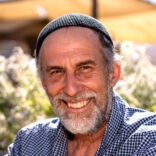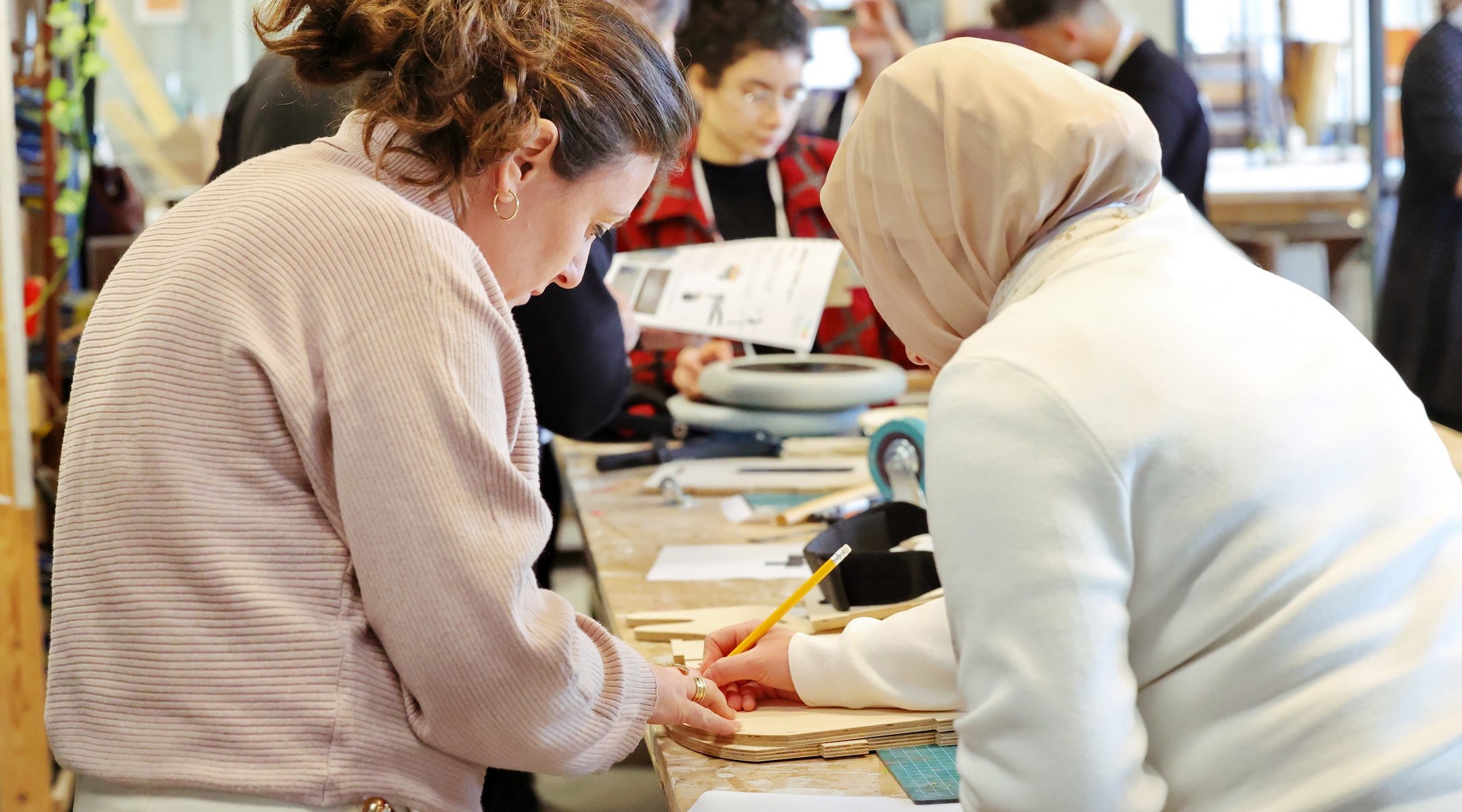(JTA) — In January 2001, I was working at the Arava Institute for Environmental Studies, located on Kibbutz Ketura along the Israeli-Jordanian border. Since 1996, the institute has included Israeli, Palestinian, Jordanian, Moroccan, American and other college-age students from around the world. It also has several transboundary research centers, including our recently established Center for Climate Change Policy and Research, and our Center for Applied Environmental Diplomacy.
From Jan. 21-27, 2001, Israeli and Palestinian negotiators at Taba, Egypt, came as close as they ever have to reaching an agreement. I thought the work of the Arava Institute would make a perfect story — with the Institute modeling what the negotiators were trying to achieve some 45 miles south of us, just across the Egyptian border. I gathered materials in Arabic, Hebrew and English about the institute and headed there. The Israelis were very suspicious but let me through, while the Egyptians took my materials and put me in a room with a soldier and his machine gun outside the door. Eventually, a military official made a call to Cairo, and I was given permission to proceed.
In Taba, I found a group of reporters sitting at a round table. I made my pitch, inviting them to see the institute as an actualization of what the negotiators were working to achieve. Their response? I was told there is hard news, always to be covered, and soft news, if time permits and if it hasn’t been touched upon recently. My story was neither.
This past spring, I would once again be made aware of that lesson — I call it the “Asymmetry of the Sensational.”
In December 2020, Congress passed the Nita M. Lowey Middle East Partnership for Peace Act (MEPPA). Created through strong bipartisan effort, this is one of the most significant and innovative pieces of congressional legislation addressing the Israeli-Palestinian Conflict. MEPPA authorizes up to $250 million over five years to promote economic cooperation and people-to-people programs; advance shared community building; and engender dialogue and reconciliation between Israelis and Palestinians.
Within the legislation, Congress appointed a Partnership for Peace Fund Advisory Board. Senator Patrick Leahy named me to the board, based on my decades’ involvement with the Arava Institute. In February, over three days in Jerusalem, Tel Aviv and Nablus, the board experienced a universe of Palestinian-Israeli collaboration, described by a young Israeli woman at TechSeeds for Peace as “statements of defiance, and friendships as radical action.”
Another program we visited was at the Wolfson Medical Center in Holon, which runs an Advanced Trauma Life Support curriculum for Israeli and Palestinian trauma surgeons. These activities optimize trauma care for local communities, creates shared experiences and builds deeper respect and lasting partnerships. Reflecting on such teamwork, Dr. Adam Goldstein told an interviewer, “In the coming days, years and decades, I hope the selflessness, the lack of ego, the teamwork and diversity and mutual respect — can be a model for our entire region.”
The goal is to bring these societies to a tipping point so they can see one another in a different light. These projects produce effective, measurable results that shape strong, respectful relationships between Israelis and Palestinians. The unending violence between Israelis and Palestinians signals they are stuck — they need an off-ramp. Greater knowledge of these programs is one way to that off-ramp.
With such positive results, why don’t more Palestinians and Israelis know about these programs and initiatives? Blame the Asymmetry of the Sensational.
In his poem “The Diameter of the Bomb,” the Israeli poet Yehuda Amichai explores how an individual act of violence expands from its “thirty centimeters” to “distant shores.” The multiplier effect of violence and extremist language far outweighs the affirmative consequences of MEPPA programs, as well as the work of more than 170 Israeli and Palestinian institutions in the Alliance for Middle East Peace (ALLMEP). On our MEPPA visit this past spring, it was so clear that, with all the positive results from these programs, fanatics need to do far less to have greater impact.
Why is the Asymmetry of the Sensational so effective? A part of our brain responds to trauma with fear, fight and flight responses. Violence and extremist voices play into and feed off that fear, creating a deadly spiral. That fear is real and leads to negative perceptions between people; the weekly headlines steer us in that direction. It is easy to see why there is so much distrust between Palestinians and Israelis.
The U.S. government over the years has invested millions of dollars, beyond MEPPA, in Palestinian-Israeli civil society. As large as $250 million is, it’s not enough. The International Fund for Ireland spent $40 per person in Northern Ireland on MEPPA-type projects. This relatively large expenditure was critical in paving the way for the Good Friday Agreement, which ended three decades of violence between Protestants and Catholics. At present, only $2 per person is spent on Palestinian-Israeli enterprises.
The international community needs to come together and coordinate vast increases in the support of these programs. That investment needs to be augmented by appointing someone whose sole task is to wake up every morning and focus on advancing peaceful co-existence between Israelis and Palestinians. Appointing a Liaison to Israeli-Palestinian Civil Society at the U.S. Embassy in Jerusalem would signal a greater integration of MEPPA, related U.S. funding and current policy.
In addition, Israelis and Palestinians need to grasp that peace is not the final destination. It is a means and not an end. Peace does not erase all disagreements. The Good Friday Agreement did not end tensions between the two communities in Northern Ireland, but it did take violence, death and extremism out of the equation so that a healthier reality could emerge.
MEPPA and ALLMEP create an essential step in that direction, with Palestinians and Israelis building mutual trust through their engagements with one another. Tareq Abu Hamed, the executive director of the Arava Institute, makes that point. “Water is not the scarcest resource in the Middle East, trust is,” he says. “We build trust between students and between researchers.”
Differences may remain, but trust creates the will to work together to overcome those gaps. Trust is fundamental to generating the conditions for Israelis and Palestinians to have the better future they deserve.
In the Asymmetry of the Sensational, one violent act or extremist statement quickly travels far and wide. We need to reverse that asymmetry and amplify quieter, transformative, positive actions between Palestinians and Israelis.
JTA has documented Jewish history in real-time for over a century. Keep our journalism strong by joining us in supporting independent, award-winning reporting.







